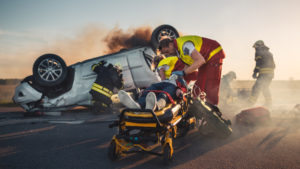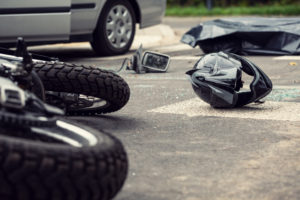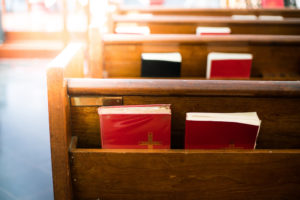Just moments before crashing on July 7th, 2018 in Chicago, the following radio transmission was recorded from a helicopter Air Ambulance by the Chicago Air Route Traffic Control Center:
Air Ambulance Pilot: “Mayday. Mayday. Mayday.”
Air Traffic Control: “What can I do for you, sir?”
Air Ambulance Pilot: “I need to find a place to land,”
Air Traffic Control: “Can we get you any assistance?”
Air Ambulance Pilot: “Not at the moment. We’re going down.”
The Superior Air Ambulance Eurocopter 135 carrying three crew and one critical patient ended up ditching in a grassy field in Chicago near the expressway. Thankfully, no fatalities were reported.
Within 24 hours, a “Go Team” comprised of specialists from the National Transportation Safety Board (NTSB) were on the ground in Chicago at the scene of the crash beginning an investigation into what led to the apparent loss of control that required the aircraft’s crew to ditch near a heavily populated urban area.
The NTSB will have at its disposal a unique piece of equipment that will likely aid in its investigation; a Cockpit Video Recorder. Cockpit Video Recorders are rarely installed on aircraft, but when they are they serve as a highly useful piece of reconstruction equipment capable of recording what happens in the cockpit in the moments before a crash. A properly equipped Cockpit Video Recorder can provide a recording of instrument panels, flight crew actions, and typically an outside view of the terrain during the most critical moments before a crash.
Cockpit Video Recorders are not a new thing. In fact, they have been on the NTSB’s “Most Wanted” list since 2002. The NTSB “Most Wanted” list identifies “critical changes needed to reduce transportation accidents and save lives.” Nevertheless, Cockpit Video Recorders have been opposed by pilots for decades due to their concerns that such images would violate their privacy rights, despite the omnipresence of video recording devices in nearly every facet of modern life. From busses to casinos to bars and restaurants, employees of nearly every other industry – even those where the lives of hundreds of passengers are not in their hands – are being recorded for a variety of reasons, including safety. It is time for the privacy concerns of pilots to yield to the safety of the air traveling public.
The International Civil Aviation Organization (ICAO), a specialized agency of the United Nations that adopts standards and practices recommended for air navigation around the world, has recently pushed for the implementation of Cockpit Video Recorders to be installed in newly produced commercial aircraft. While the ICAO does not have direct enforcement authority to mandate the implementation of Cockpit Video Recorders, it has made its preference for Cockpit Video Recorders known to the various national regulatory bodies around the world, including the United States Federal Aviation Administration (FAA). It is now up to federal authorities to decide whether to require the installation and use of Cockpit Video Recorders.
While the cause of the Superior Air Ambulance Crash in Chicago remains under investigation, the NTSB will no doubt have a leg-up investigating this crash with the availability of the Cockpit Video Recorder. Hopefully the usefulness of this video will serve as further evidence of the immediate need to implement Cockpit Video Recorders to investigate crashes today in the hope of preventing crashes tomorrow.

The Legal Examiner and our Affiliate Network strive to be the place you look to for news, context, and more, wherever your life intersects with the law.













Comments for this article are closed.